The architectural firm responsible for this project envisions a future where fans remain in their spots while the stadium moves to them.
The “Half Ship, Half Stadium” Project
Vincent Callebaut Architectures, based in Paris, has recently unveiled designs for floating stadiums aimed at the 2026 FIFA World Cup, which will be hosted across three North American countries (Canada, Mexico, and the United States). These designs, named Oceaniums, are seen as breaking away from traditional stadium norms, offering a vision where fans stay put while the stadium comes to them.
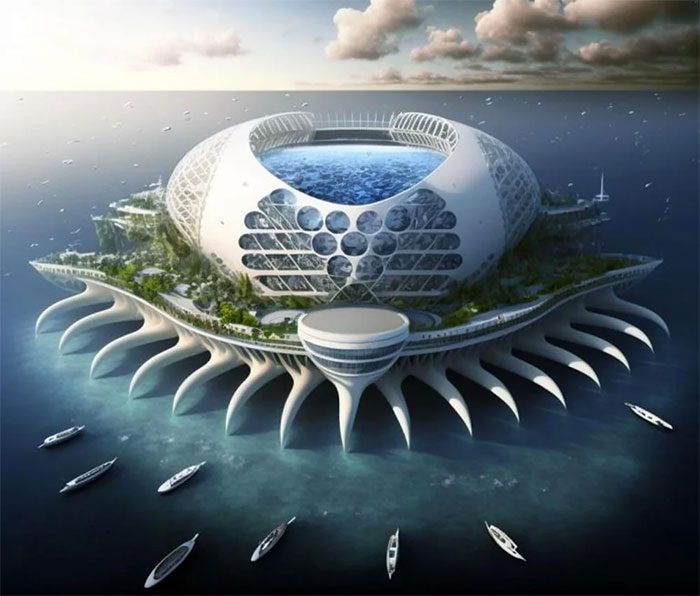
Floating stadium Oceaniums.
Oceaniums can be described as “half ship, half stadium” as they are situated on the water rather than on land. According to Vincent Callebaut Architectures, Oceaniums will be constructed using recycled and bio-sourced materials such as wood, recycled aluminum, green algae, and plastic waste from the so-called “seventh continent” of ocean garbage. This floating stadium will also harness renewable energy sources like solar radiation, wind energy, and ocean currents for movement.
The design team is focused on providing a fresh perspective on cultural sports activities, bidding farewell to “outdated” stadiums and embracing a new, sustainable, and environmentally friendly way of enjoying sports tourism. If this project becomes a reality, World Cup and Olympic host nations will no longer have to continually construct new stadiums for each event.
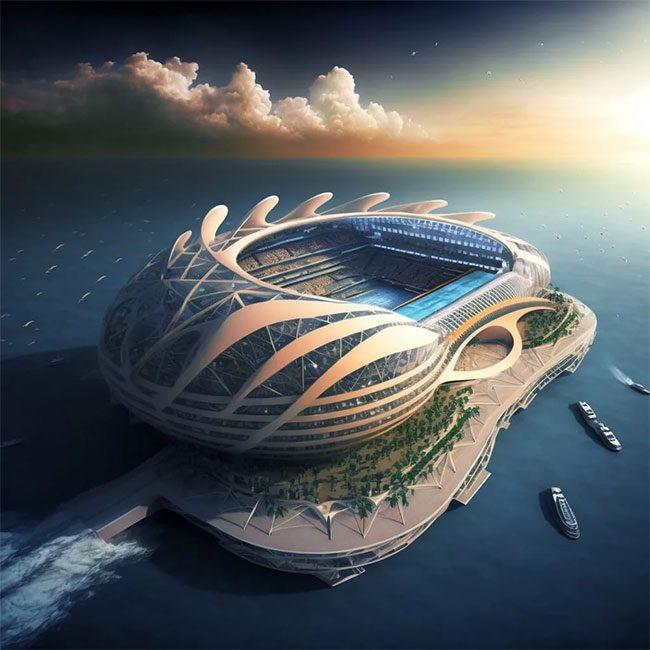
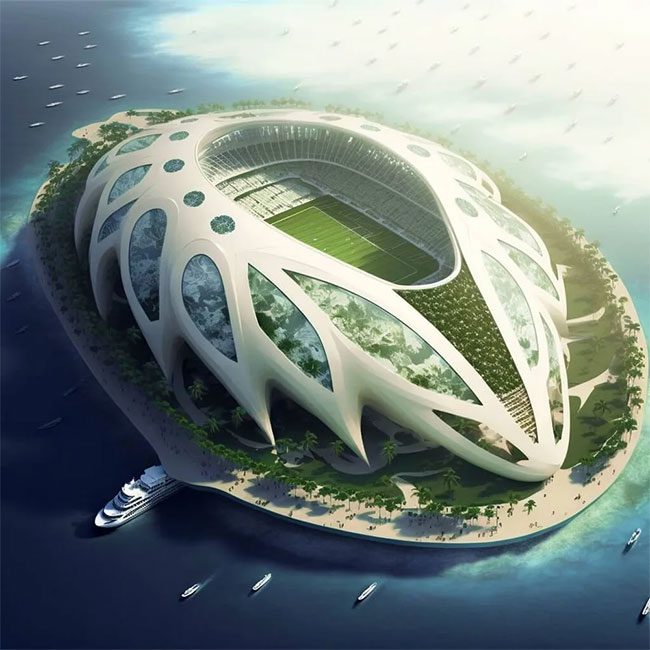
Oceaniums will be built with recycled and bio-sourced materials.
“Architecturally, these floating stadiums are inspired by the theory of biological metamorphosis. They resemble coral reefs undergoing calcification, the skeletal structures of marine mammals in seawater, and bioluminescent organisms. They all reflect the biodiversity of oceanic flora and fauna,” stated a representative from the firm.
Additionally, Vincent Callebaut Architecture reported that plastic waste will be transformed into material for 3D printers connected to artificial intelligence processors. The firm anticipates that with the development of countless algorithms, especially AI’s predictive capabilities and 3D printing technology, this method will become essential in minimizing human-caused risks on construction sites in the future.
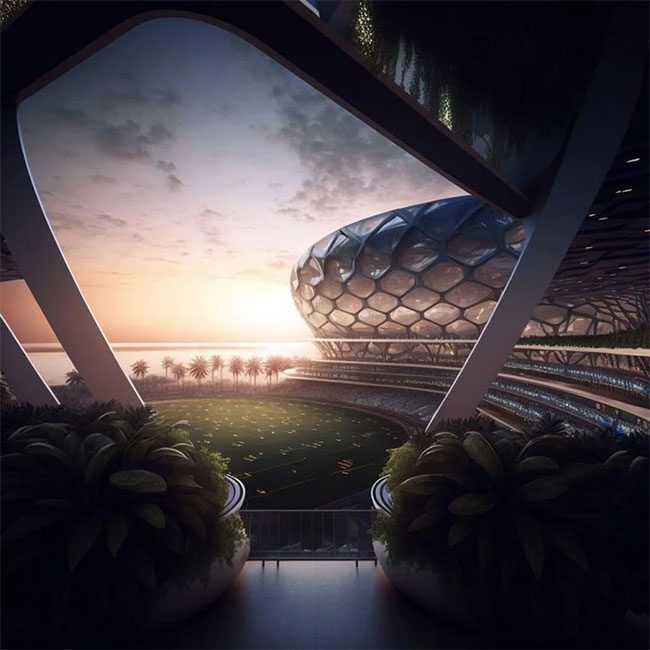
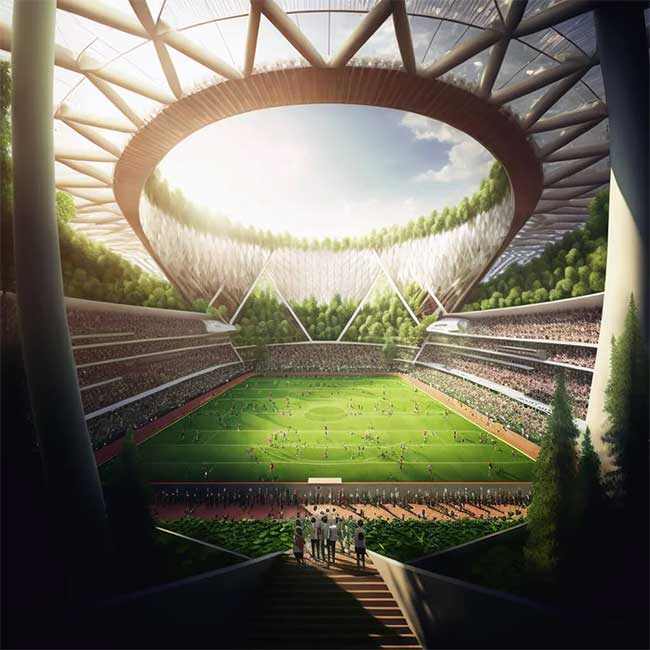
This stadium is inspired by the theory of biological metamorphosis.
“Our ambition is to turn time constraints into opportunities to invent a new sports ecosystem based on a circular economy aimed at regeneration—nothing is lost, and nothing is created; everything is recyclable.
When waste and pollution are transformed into resources, and fossil fuels are gradually abandoned, it will promote the development of ocean energy and tidal energy technologies, as well as scientific research surrounding marine biological simulations,” emphasized Vincent Callebaut Architecture.
A “Revamp” of Stadiums
AI-generated sports arenas may appear to be a design project that will never come to fruition or merely a distant dream. However, some countries, like China and Qatar, have successfully constructed impressive sports facilities.
During the recent 2022 World Cup, Stadium 974, constructed from 974 recycled containers, became a unique venue with over 40,000 seats, which can be completely disassembled after the tournament concludes.
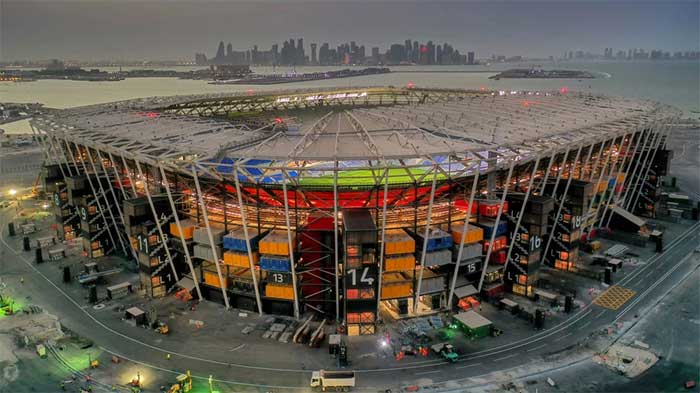
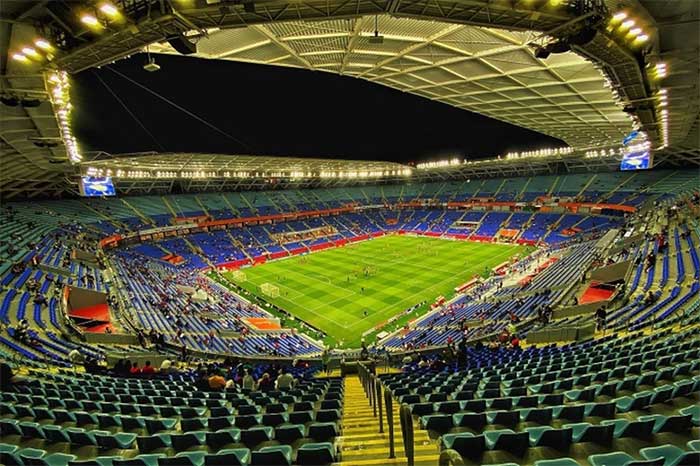
Stadium 974.
The shape of the stadium and the spacing between seats facilitate natural ventilation, eliminating the need for artificial cooling technology. According to FIFA, Stadium 974’s smart design saves building materials and reduces water usage by up to 40% compared to traditional stadium development.
After disassembly, materials from Stadium 974 will be recycled and utilized in Maldonado, Uruguay, for the 2030 World Cup.
Additionally, the Chaozhou Stadium in China is being introduced as the largest covered complex in the world. It is also expected to become the largest semi-underground stadium with an area of over 33,000 square meters and a capacity of 30,000 people. This stadium is designed to absorb and store rainwater, minimizing damage from rain and reducing energy consumption as well as temperature fluctuations.
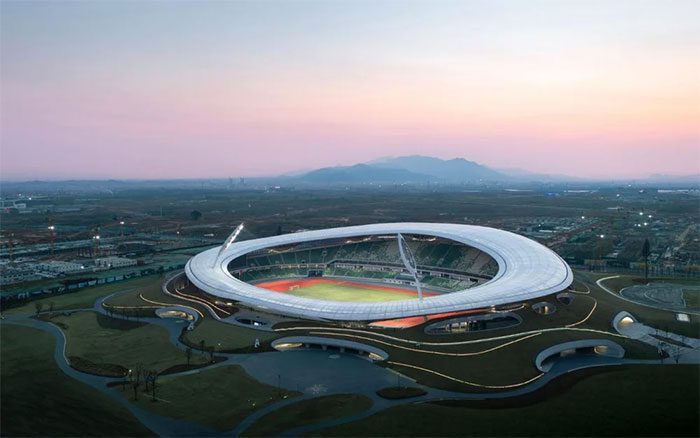
Chaozhou Stadium, China.
This project is designed to harmonize and connect with people, blending seamlessly with the surrounding landscape. Even when the stadium is not open, the public can stroll along the grassy slopes surrounding the stadium, much like walking in a landscaped park.


















































